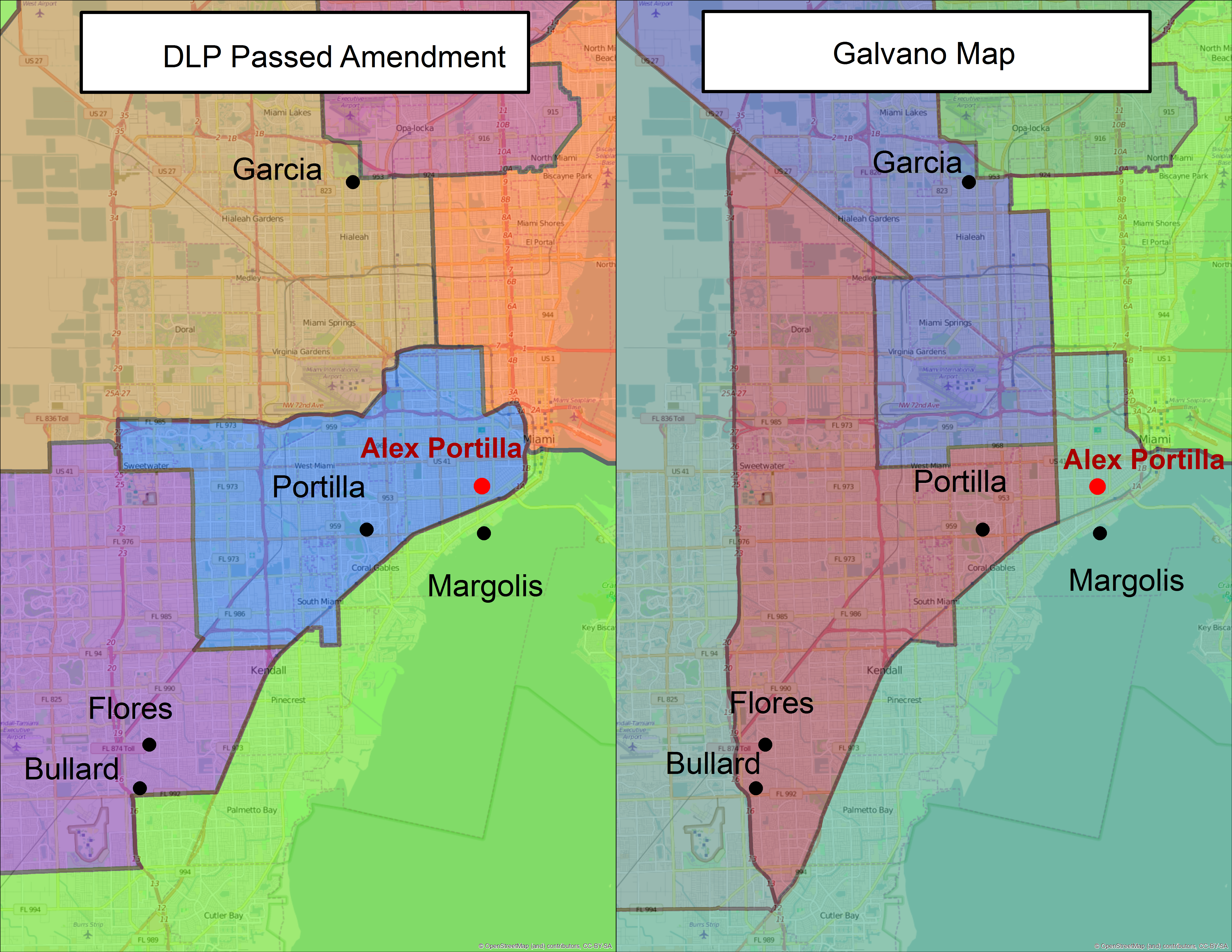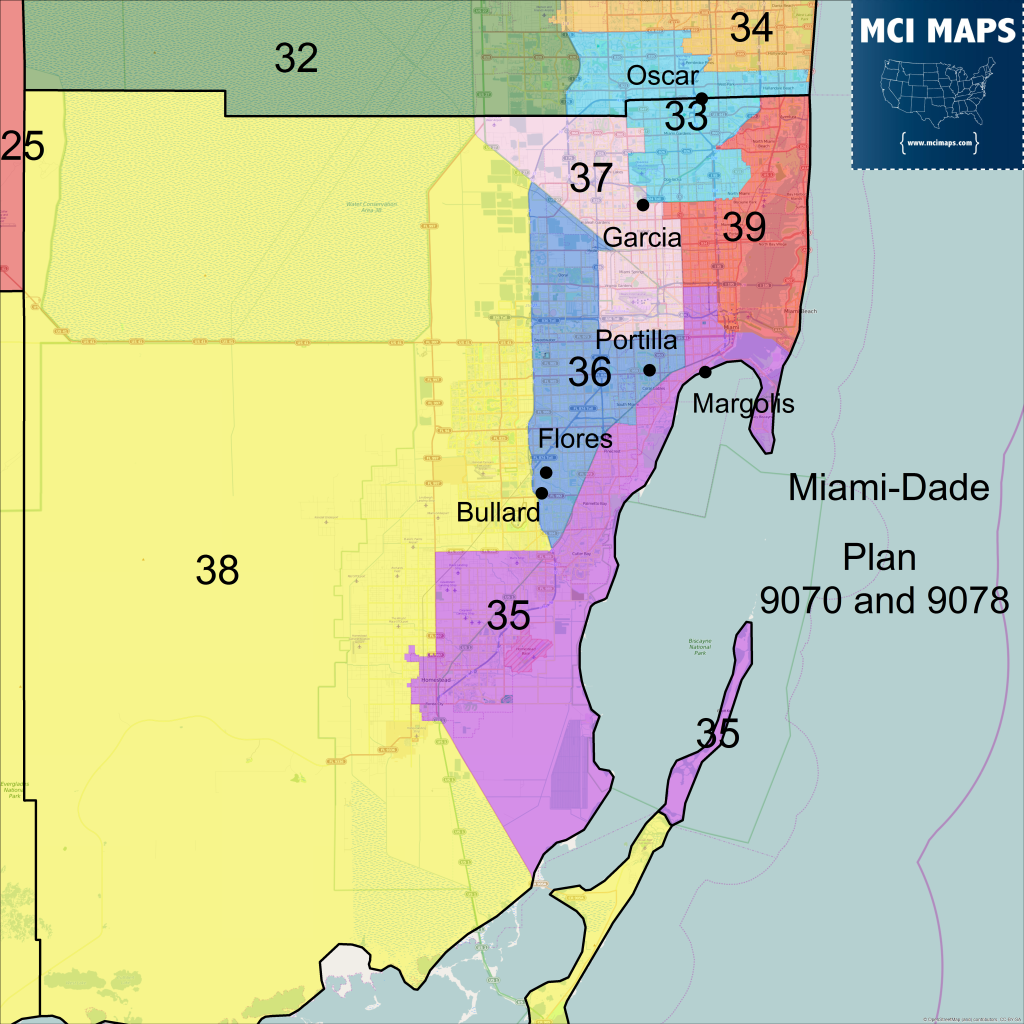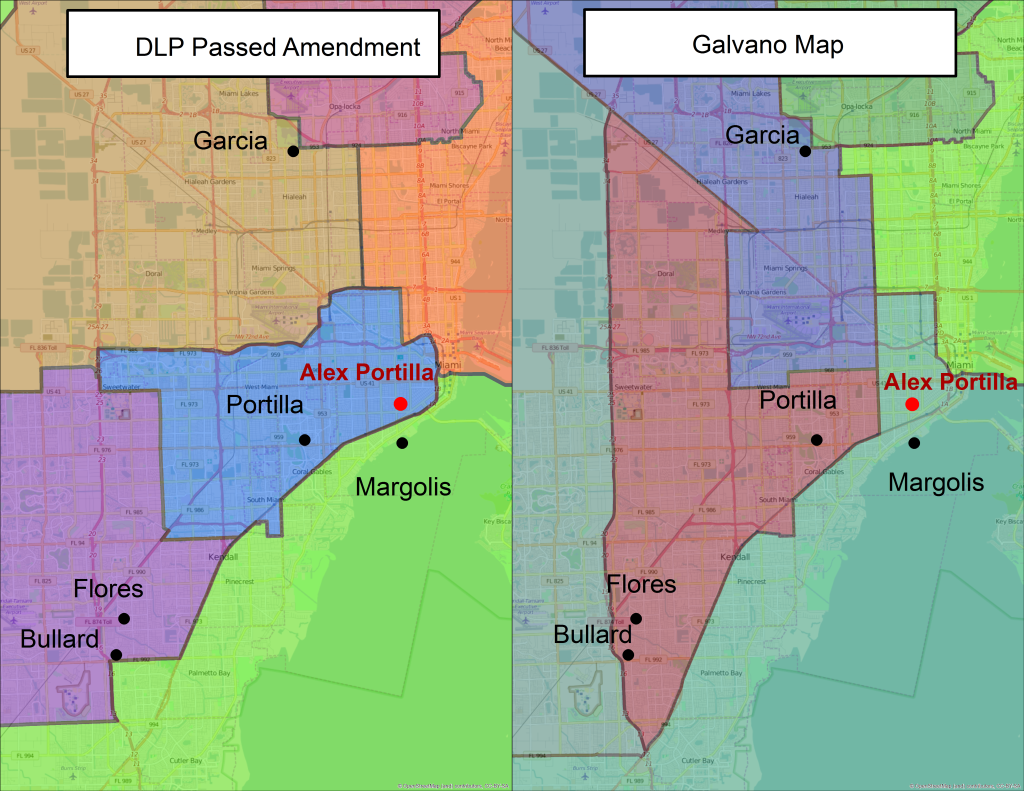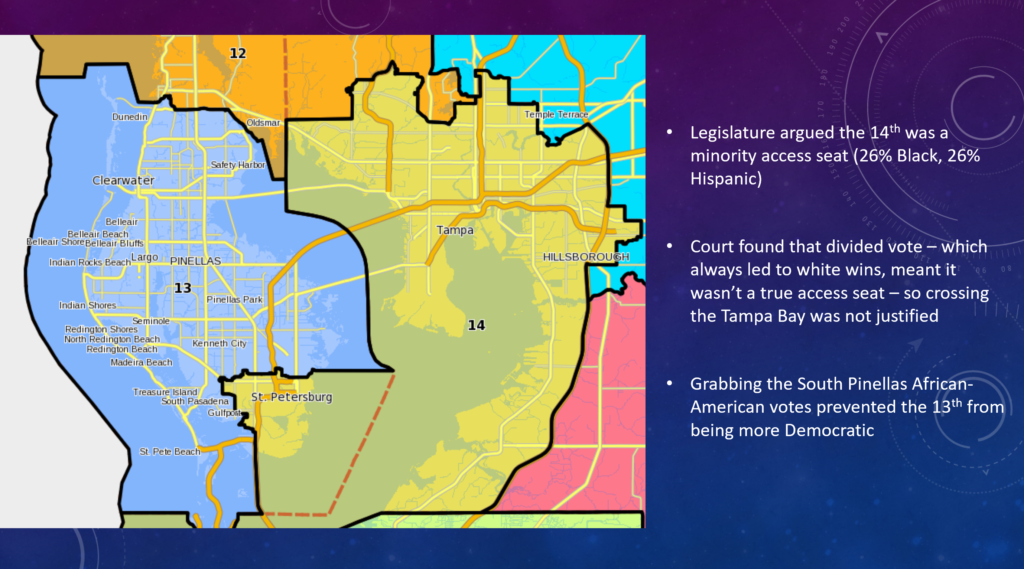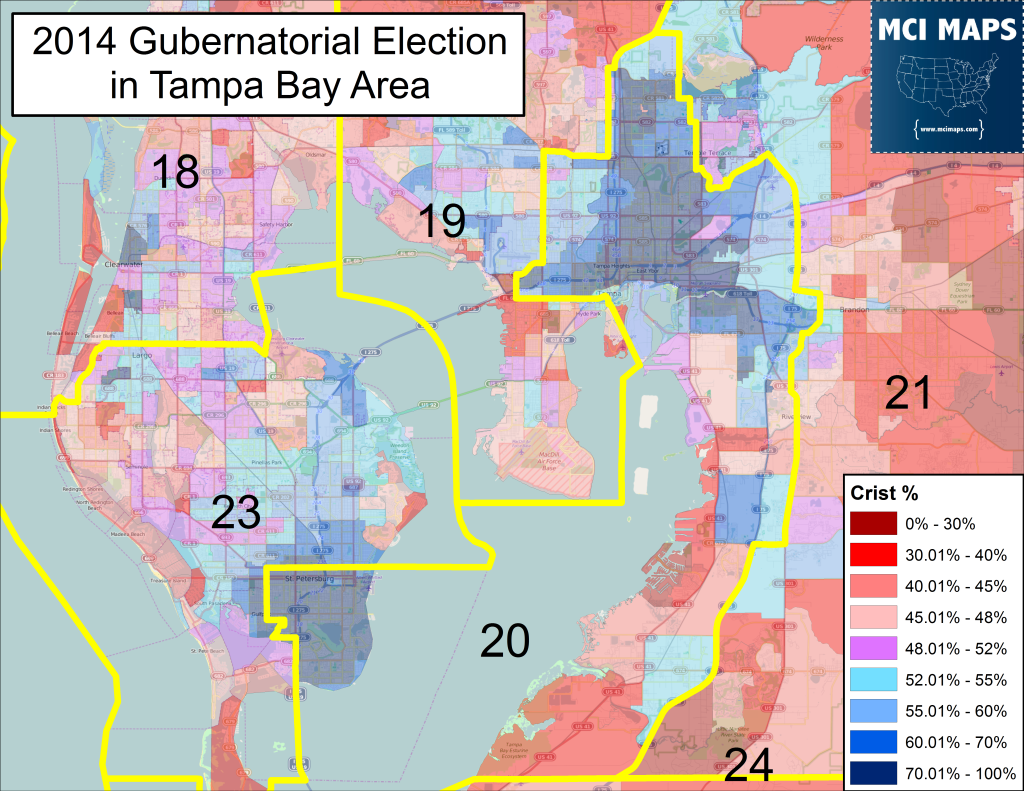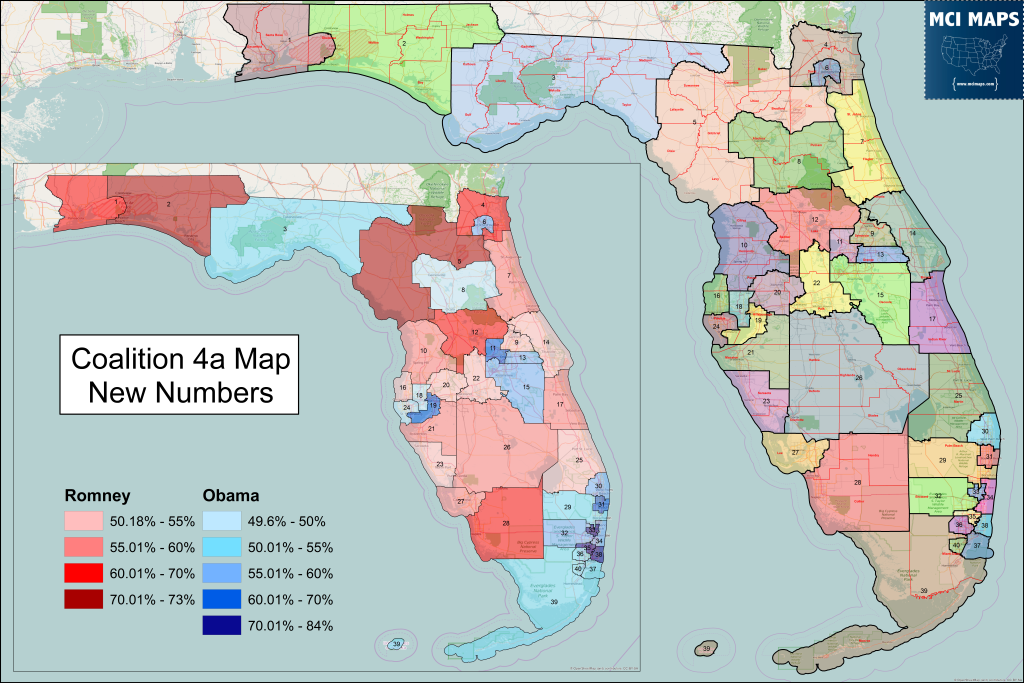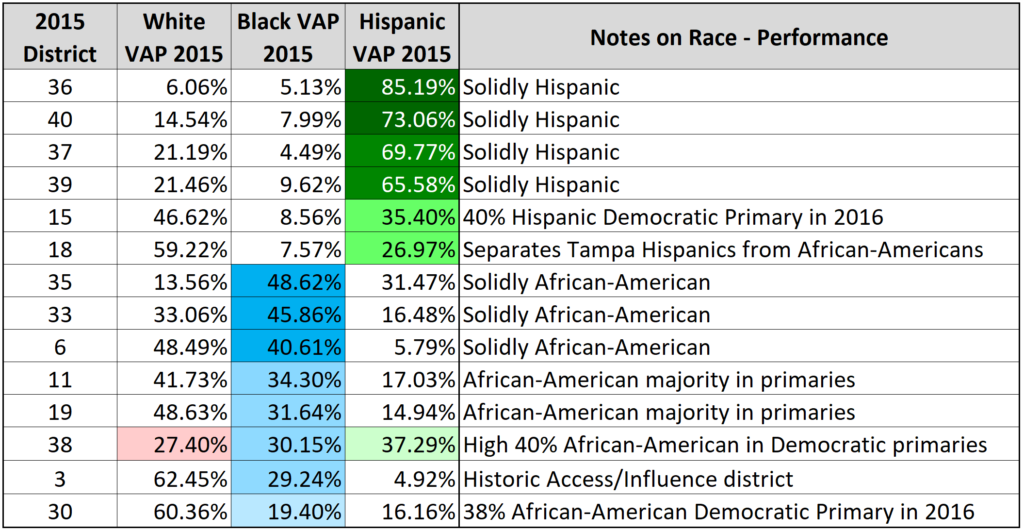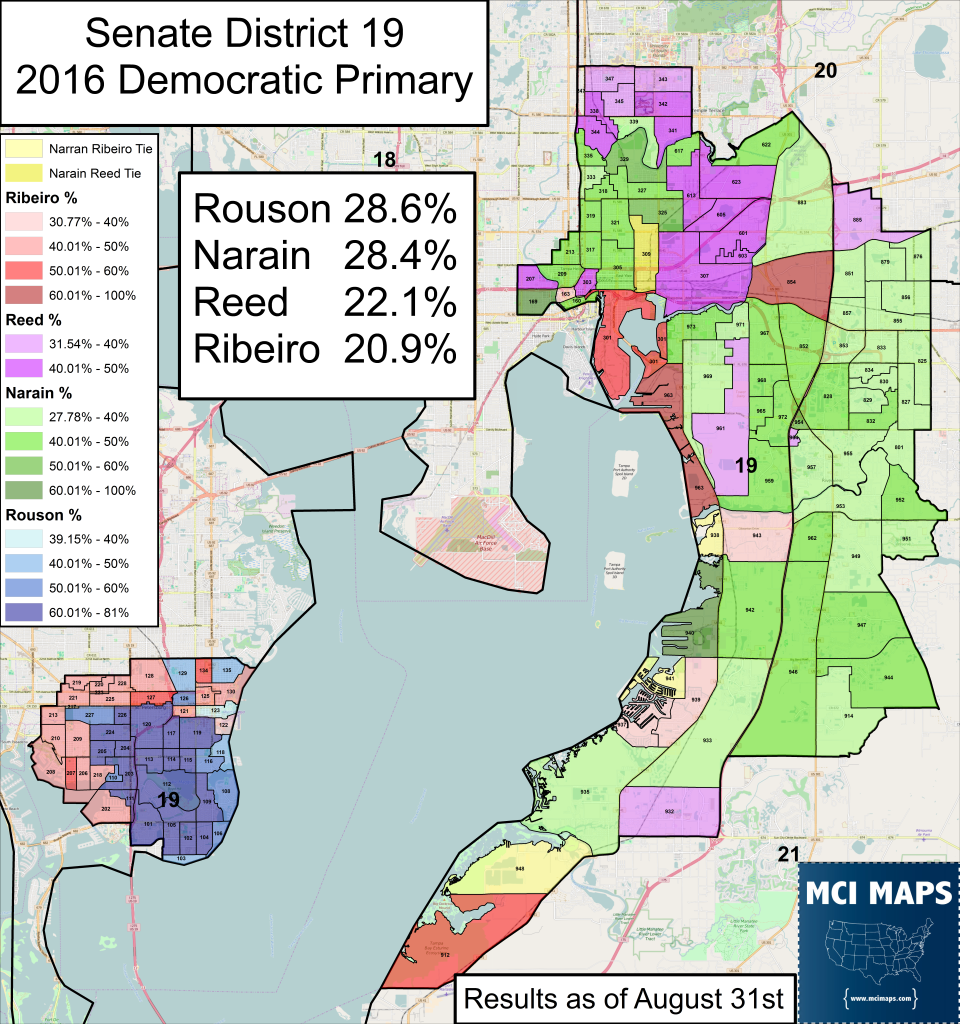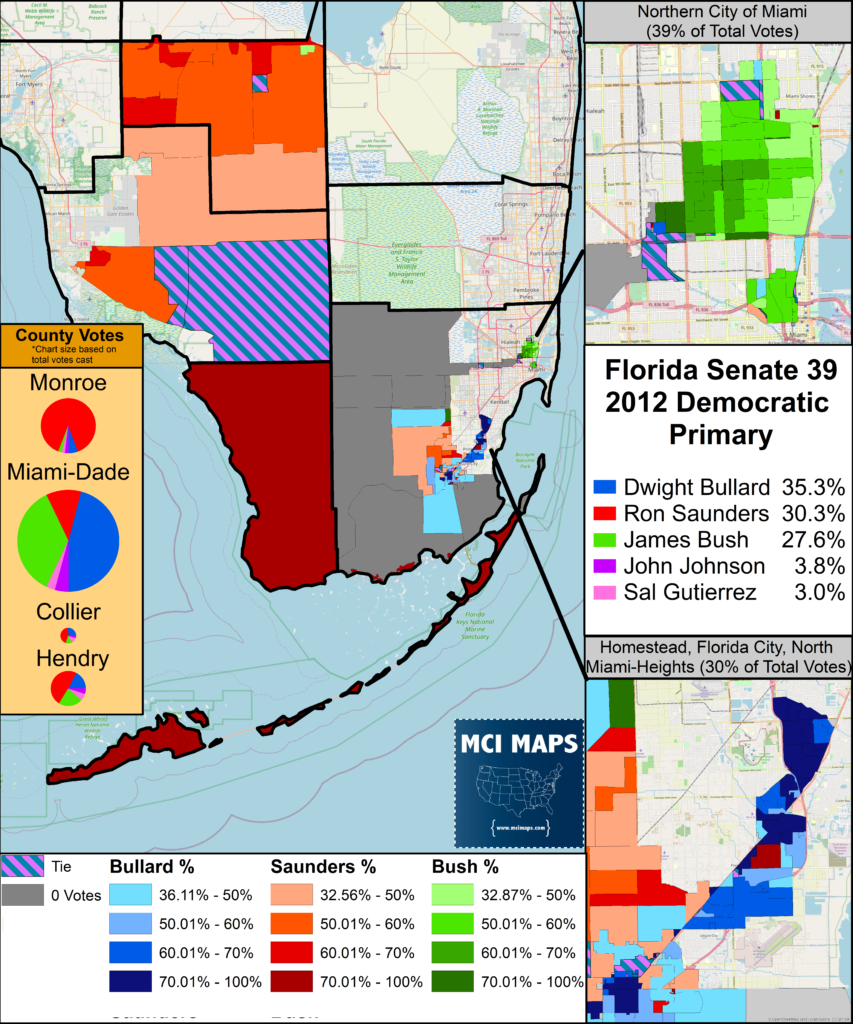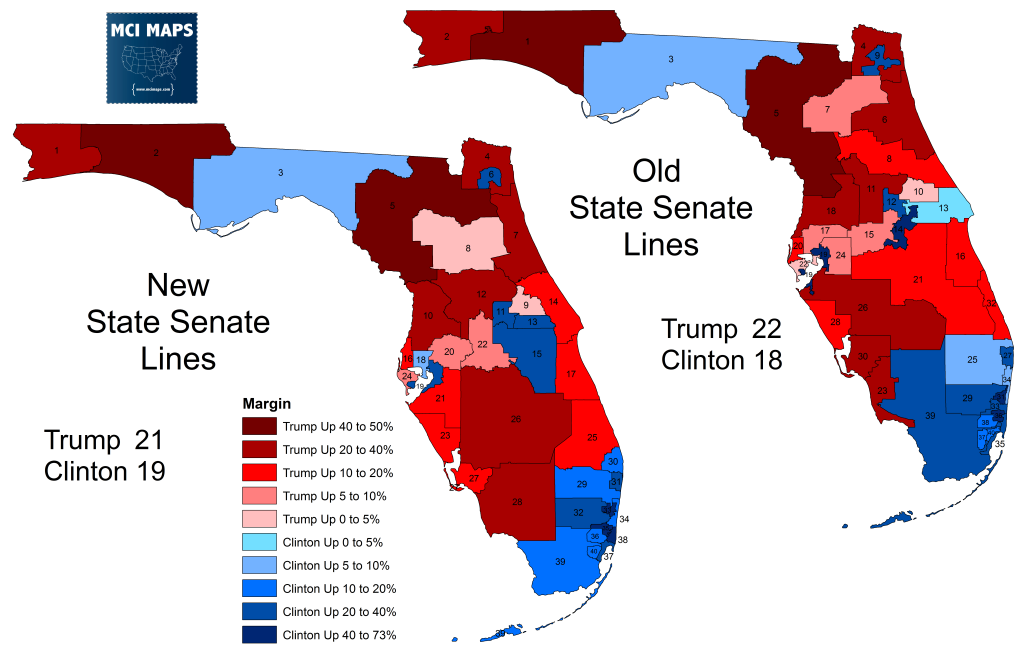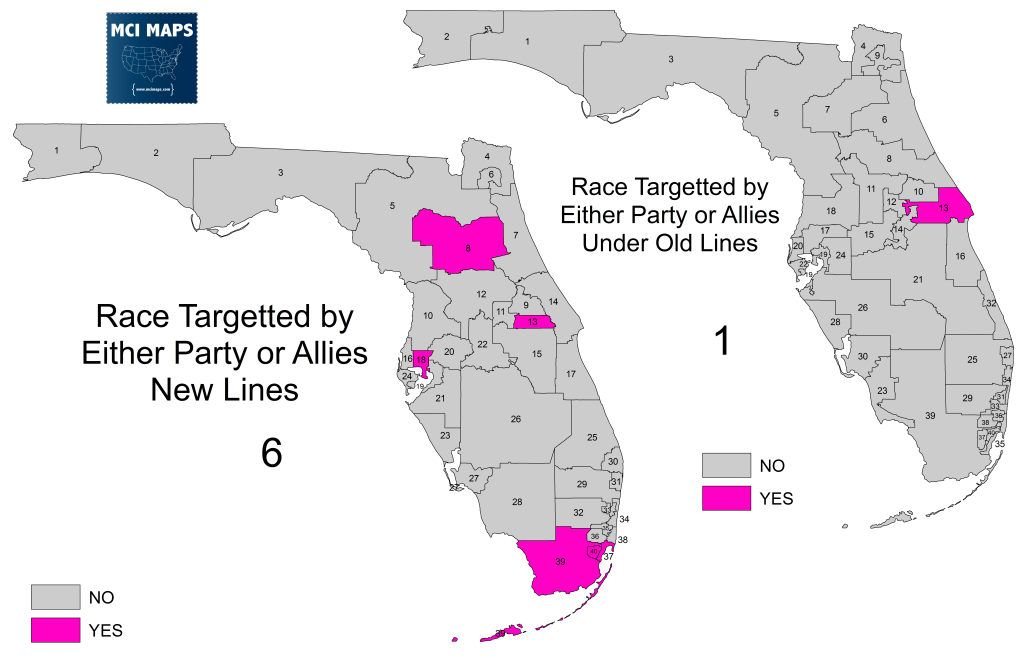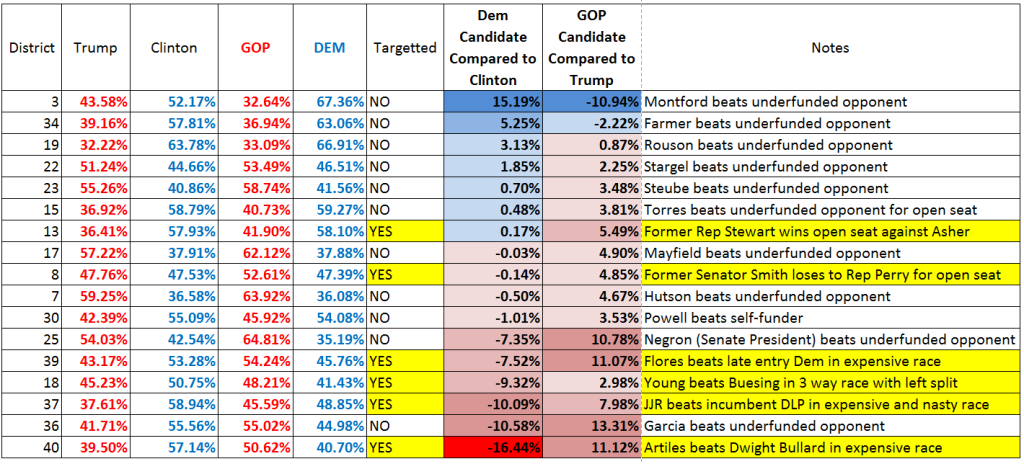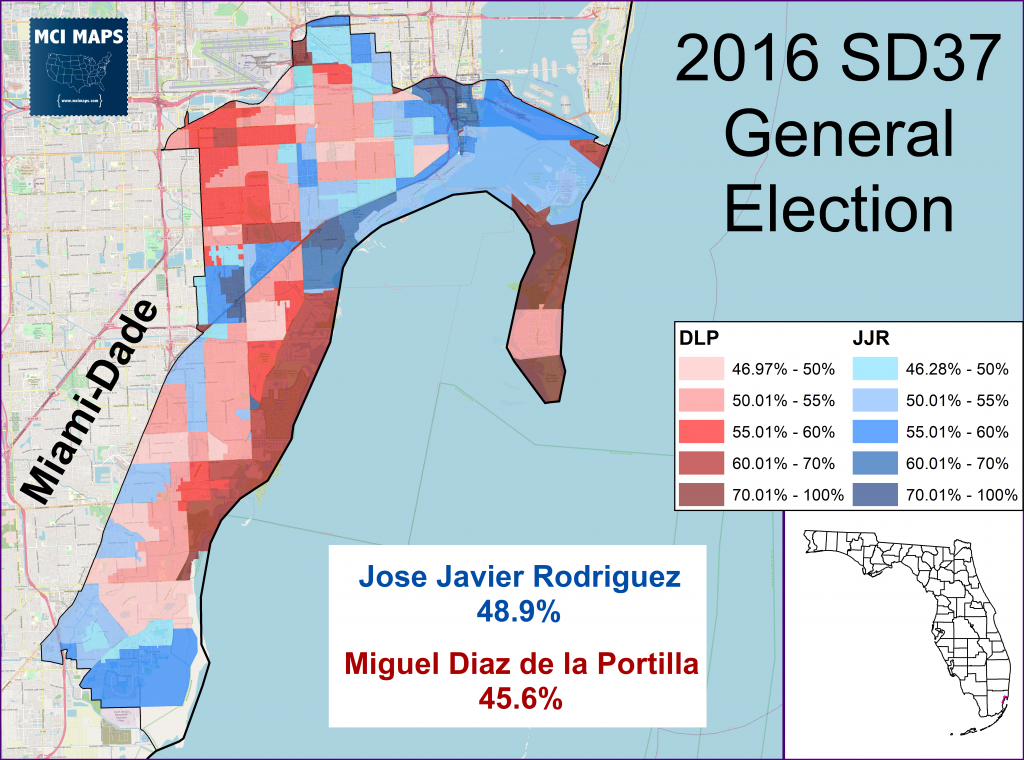Last week, we looked at how the 2012 efforts of Republicans to gerrymander the Congressional map were exposed in the courtroom. This lawsuit and trial led to the Florida Supreme Court striking down the Congressional map and ordering a special session to redraw the lines. At the same time this was going on, the Florida Senate was being sued over its Senate map. The suit uncovered troves of documents showing that Senator Don Gaetz, who was in line to be Senate President at the time, worked with lawmakers and GOP operatives to draw GOP-heavy maps. The legislature was being battered from all sides.
State Senate Redraw Session
(If you haven’t read last week’s article, I recommend you look at it’s section on the lawsuits and findings).
Settlement
The court order to redraw the Congressional map was a gut punch to the Florida legislature. Seeing the writing on the wall, the legislature opted to avoid a final trial on the state senate plan and agreed to a redraw that plan as well. Just weeks after the July ruling on the Congressional districts, the State Senate stipulated their map was unconstitutional and that they would go into a special session in October of 2015 to draw new lines. The agreement also came with the understanding that the burden would be on the legislature to prove its new lines were in accordance with Fair Districts.
This was a stunning low point for the legislative leaders. Their skirting of the law was not only uncovered, but was admitted to in court. Now lawmakers would have to go into another special session; where the burden would be on them to justify the lines they drew.
House vs Senate & the Senate Presidency Battle
In 2012, both chambers agreed to let each chamber approve its own plan; House drew the House map and the Senate drew the Senate map. However, this 2015 special session on the State Senate plan would not adhere to this gentleman’s agreement. The House would have input on the plan. This came as the two chambers already had a blow-up over the Congressional map. Relations were at an all-time low.
On top of the inter-chamber drama, the State Senate was embroiled in a years-long debate over the future of the Senate Presidency. Senate tradition was that the majority party’s leader would become Senate President, with terms lasting two years. Who would be the incoming President was often determined years in advance. By 2015, the battle over who would be Senate President after the 2016 elections was ongoing. Senator Joe Negron, of the Conservative wing, and Senator Jack Latvala, of the moderate win, were neck and neck in support. In the months leading up to the special session, the reports were that Negron was leading Latvala by one vote. The redistricting special session could mean a major shake-up of the map, leading to new primaries that could determine support within the GOP caucus. This would further poison the Senate special session. Changes to the map were viewed not only in a Dem vs GOP way, but also in a Negron vs Latvala way.
Session Process and Debate
The special session began in October, just months after a failed session to pass a Congressional map. Similar to the Congressional plan, the legislative staff was instructed to work on a base map of districts. Six plans were ultimately introduced (full analysis here), each with different takes on multiple area. Every state senate district was at risk of being altered, with the lone except of SD-3.
Many plans put multiple Senators in the same district. While Congressional maps do not require residency, the State Senate plans do. Per the Fair Districts amendments, residency could not be considered. However, the press watched the lines in relation to addresses to monitor for any suspicious lines.
I highly recommend reading the analysis link above to get a better feel for the debate and types of maps that could be drawn. The option of six base maps led to a very likely outcome where neither chamber would come to an agreement. In addition, a great deal of debate took place over specific areas. I will cover a basic summary of the flash points. A book could be written about it all.
Leadership Map
The option of six maps created a lot of wiggle room for Republicans to make alterations. The option of one base map in the Congressional session left many lawmakers worried that any alterations would be seen as partisan. Indeed that is what cause the Senate-House blow-up over the Lee amendment. Leaders hoped multiple plans would give lawmakers a plan they could all agree on.
Suspicion grew fast as the session began. It started when Senate redistricting chairman Bill Galvano (a Negron ally) picked plan 9078, which was one of the least compact and also had a modest GOP advantage.
Galvano ran into trouble getting some for the plan, however. Jack Latvala and many of his allies refused the back the plan. In addition, the three Hispanic-Republican members from Miami-Dade: Anitere Flores, Rene Garcia, and Miguel Diaz de la Portilla – all objected to the lines the region. Portilla (DLP) led the charge – arguing the Hispanic shares of the the Dade districts were not large enough.
The DLP Amendment
DLP pushed an amendment that super-charged the three seats to each have Hispanic populations over 69%. Now, past articles have talked about the need for super-majority Hispanic seats in most of Miami-Dade due to turnout and non-citizen figures. However, this time the point became much more debated as census data vs voting data argued the super-charging was less needed – and that a potential 4th Hispanic seat in Dade was possible. DLP erased that potential with his amendment, which restructured Miami-Dade and created three super-duper Hispanic districts.
I should add that while the concern of stretching a minority community over so many districts can risk minority representation, DLP’s arguments hold less weight with myself and others because in 2012 he pushed for four Hispanic districts.
The amendment gave Galvano the votes he needed to pass the map. However, it quickly became clear some ill-intent was going on when the line changes were compared to the addresses of lawmakers.
The amendment was very poorly received by the Florida House. The implications of the change was clear. DLP’s amendment drew a district just for him, keeping Senator’s Flores and Bullard out of his district. In addition, a district for his brother, Alex, was ready once Miguel was termed out. Alex Diaz de la Portilla was a former state senator who was planning to run for state senate again. Under the Galvano plan, Alex would have been forced to run for a solidly Democratic seat held by longtime Senator Gwen Margolis. (Click for her role in the 1990s redistricting process). Under DLP’s amendment, Alex could follow brother Miguel four years down the line.
The Tampa Bay
Another region subject to fierce debate was the Tampa Bay region. The question of the historically-black SD-19 crossing the Tampa Bay emerged. In the Congressional plan, the court rejected the 14th district crossing the Bay since uniting the Tampa and St Pete African-American populations couldn’t create a true minority seat. Read more about that here.
However, an African-American State Senate district could be created by crossing the bay. There was far greater justification for crossing such a large gap of water in the Senate case. Republicans were happy to continue crossing the bay, as it also aided them by ensuring a mid-Pinellas district was competitive.
Pre-2010 data to did point to the need to cross the bay to create a majority-black Democratic primary. However, 2012 and 2014 data pointed to that no longer being needed. Demographic shift and increased turnout meant a possible Tampa/Hillsborough-only African-American seat was possible.
The concept of a Hillsborough-only seat was debated. Florida House Republican Matt Caldwell drew this plan himself.
However, the Senate Republican leaders argued they could only use electoral data from pre-2012. To be clear, there was no law. Rather, they argued the simply did not have the time to update the data in the system. This was patently false, but became their main talking point. They argued crossing the bay remained needed. In the end, the Coalition Plaintiffs would not push the issue and abandoned the idea of a Tampa-only African-American seat.
House and Coalition Plans Released
The dynamic from the Congressional redistricting special session quickly began to repeat itself again. The House had no interest in the DLP-amended State Senate plan. They released their own plan, which was largely similar to the state senate outside of Miami-Dade. House Redistricting head Jose Oliva made it clear he had issues with the DLP amendment.
Meanwhile, the coalition plaintiffs released proposals as well. In the coalition would agree with the chambers on some regions, and disagree on others. Maps/analysis here and here.
The #LeggBulge
When the house’s plan went under further examination, a curious change was noticed. It was no secret the House leaders were angry about the Senate Presidency distraction. They appeared to retaliate against Senator Latvala with their proposal. The plan released amended the chosen base map in the Pasco region, adding Senator John Legg’s house to Latvala’s own district. The plan, which created a little jut out to grab Legg’s house (following a powerline, btw), was referred to as the #LeggBulge on twitter.
Legg was an outspoken Latvala ally. The move was seen as a clear bit of revenge. Latvala vented about this episode in later court depositions. There has been speculation Senate leaders at the time (folks in Negron’s side) were part of this attack. Latvala certainly thinks so.
The Senate Presidency Doomed it All
The Senate’s internal fighting spelled doom for redistricting from day one. The questions about where districts would go became questions of which side in the Latvala and Negron camp a likely primary winner would emerge. Both candidates were likely to spend millions propping up candidates. This doomed the process. Republican Senator Tom Lee spoke openly about this situation in depositions leading into the trial to decide a final plan.
First, Latvala was able to kill Galvano’s chosen plan when several of his backers joined with the Democrats to vote it down. Rather than face defeat, Galvano supported the DLP amendment previously discussed, which got the three Republican Hispanic State Senators: DLP, Flores, and Garcia back on board. This, however, is what poisoned the well with the House. The plan was viewed as very vulnerable in the courts. THEN, after that plan passed, Senator Don Gaetz, gave a speech on the floor where he attached Jack Latvala and called him a bully. This came a week after Latvala wrote an op-ed where he attacked Don Gaetz for his proven-guilt in violating the Fair Districts amendments in 2012. At the same time, Latvala was backing Bay County Commissioner George Gainer in the GOP primary for SD-2, a race also featuring Don’s son, State Representative Matt Gaetz.
(This is when Florida reached its peak as a Game of Thrones/Veep hybrid)
With everyone incredibly frustrated and the chances of passing a plan dim, the Senate agreed to hold a vote on the State House plan. Not only was Latvala and his folks not on board, but Dade’s Republican Hispanic Senators were not either. Combined with all Democratic opposition, the vote crashed and burned. The map failed in the Senate 16-23. The Senate was deadlocked. Session was dead.
After the failed session, many lawmakers echoed calls for independent commissions in the future. (Even more details here). Before the session formally ended, Latvala dropped out of the Senate Presidency run, part of a deal with Negron to be named Appropriations Chair.
And with that, Judge George Reynolds would have to do would Judge Terry Lewis did for Congress – take testimony, see plans, and make a selection.
Final Senate Map
It was December of 2015 by the time a final map would be decided. The GOP leaders had been desperate to pass a map, worried the courts would pick a Plaintiff-drawn proposal. They asked, and failed to get, the court to appoint a special master. Similar to the Congressional process, the plaintiffs also were able to submit their own plans. They’d released different plans over the session, settling down on two plans just before the December hearing. the end, Judge Reynolds would indeed pick a plaintiff-drawn map: CPS4A.
The plan gave Obama 21/40 districts and was mathematically compact and limited local government splits. More details here. A random-number generated was used to determine the final Senate numbering. All Senate seats would be up in 2016, with even-numbers running for just two years, and odd running for four years.
While the Senate could have appealed to the FL Supreme Court, they ultimately opted to move forward with the new map.
The plan also aimed to increase minority representation while also limiting packing. The plan embraced a 4th Hispanic seat in Miami-Dade, but saw a reduction in the Hispanic population for a Senate seat in Orlando. The plan got rid of the functionally-African-American SD39 in South Dade, and replaced it with an access seat SD38 in Northeast Miami-Dade.
There was anxiety from the NAACP and other minority organizations after the plan was approved. Like the Congressional plan, the performance of these districts would be a major data point in how packed minority voters must be in order to elect candidates of their choice.
How Did the Maps Perform
Minority Districts
The 2016 elections were a major referendum on the sometimes-contentious relationship Fair Districts and Minority Representation. Seats were made less compact and the question was if they would still elect minority candidates. How did they perform?
- SD-36, 37, 39, 40 all elected Hispanic lawmakers for Miami-Dade.
- SD-15: Remained in Hispanic hands with election of Victor Torres in Orlando/Kissimmee
- SD-35, 33, 6: All remained solidly African-American
- SD-11: Remained African-American with an over 60% black Democratic primary – won by Randolph Bracy
- SD-19: Remained African-American with an over 50% black Democratic primary – won by Darryl Rouson.
- SD-38: Won by Caribbean-American State House member Daphne Campbell
- SD-30: Won by African-American State House member Bobby Powell.
The end result was an increase of Hispanic Senators (from 4 to 5) and African-American Senators (from 6 to 7).
SD19 was home to a very contentious four-way primary – which sparked worry from the NAACP, local activists, and many Fair Districts backers. While the primary would be majority black, there were three prominent black candidates running and one self-funding white candidate. The worry was that trial lawyer Augie Ribeiro would win with a plurality – giving advocates for heavily-packed districts ammo. The worry did not come to pass, as Ribeiro came in 4th and State Rep Darryl Rouson took the seat.
You can ready more about that race here.
Miami-Dade’s district changes are fairly complex. In 2012, the Dade region had a district (SD39) that was plurality Hispanic but performed as an African-American district thanks to its Democratic primary. The seat was held by Dwight Bullard. This issue in the redraw was just how odd its shape was.
The other pressure on the 39th was that if a fourth Hispanic-majority was to be created, it would cost African-Americans a seat. This tension between Hispanic and Black representation in Miami-Dade is decades old. The final map did change the 39 to a majority-Hispanic district. Bullard would go on to run-in and lose in SD40.
The map created a plurality Hispanic seat in northeast Dade that gave African-Americans a chance to win in the Democratic primary.
The 38th isn’t really designed for one specific minority group. African-Americans lead the primary vote, but the African-American community itself has a divide between Caribbean and non-Caribbean black residents. The seat was partly a remnant of the 35th, which was a functionally white district held by white Democratic Senator Gwen Margolis.
The Fall of Gwen Margolis
The State Senate revote put many politicians in tough spots for re-election. However, its clear it ended one career: Senator Gwen Margolis.
Gwen Margolis in 2016 represented an old era of Miami-Dade politics. In the 1970s and into the 1980s, many powerful Democratic politicians came from the county. They were largely white. But as Miami-Dade’s demographic shift (which I’ve covered in this redistricting series) took off, the era of Hispanic rule in the county cemented itself. Like politicians before her, Margolis, who’d run for State House in 1974 in order to push the equal rights amendment, would find herself out of touch with her voters and resisting change. (Read this bio).
Margolis was a major figure in the 1992 Congressional redistricting process. At the time she was the Senate President. Her efforts to create a white-heavy Congressional district cause a blow-up between the Senate and House. After a failed Congressional run, she eventually became a county commissioner, and led the push to pass a Human Rights Ordinance. She’d return to the State Senate in 2002. Lost a race for Property Appraiser in 2008 – then return to the Senate in 2010.
Margolis was progressive on many issues. However, showed a stunning lack of respect for the demographic change occurring in her home county. She tried to claim that white voters were entitled to a district since whites were a minority in Miami-Dade.
“I respect this, and the community [Hispanics] has always been my friend. But they aren’t deprived – they’ve always been able to elect the people that they choose, and there’s no reason why they shouldn’t. The Anglo community is a minority, so we should get the same consideration.”
Gwen Margolis during the redistricting debate (referencing Hispanic and White residents)
Margolis has long shown this behavior. She had been in a major debate with Miguel Diaz de la Portilla in 2012 over Hispanic representation in Miami-Dade; again arguing the “anglo” vote was afforded representation. Her comments on Cuban voters and language minorities were not well-taken.
I have covered the ethnic tensions in Miami-Dade here, here, and here. Margolis’ comments over the years were a continuation of this.
Margolis was going to run for SD-38 under the new map, and was viewed as having a legit shot at winning due to her long tenure. Her most prominent opponent at the time was Daphne Campbell, a Caribbean state house member who was more friendly with Republicans on multiple issues. Many Democrats wanted Dwight Bullard (a progressive) to move to the district and run; but he declined.
Gwen Margolis, however, chose to immolate her career at a campaign event in the summer of 2016. Her often-excused insensitive statements took a nastier turn than anyone expected.
“It’s reprehensible that three Haitians, some teacher and some lawyer think that they have the right to run against me,”
Gwen Margolis at Sunny Isles Beach Democratic Club meeting
The backlash was, rightfully, swift. Margolis lost endorsements, lost support, and within two days was retiring from office. For longtime fans of the Senator, it was a stunning fall from grace.
SD38 would go on to have a chaotic primary made up of African-American, white, and Hispanic candidates.
Daphne Campbell would win the seat, but then lose it in a primary two-years later.
Partisan Performance
The new map much better reflected the partisan split in the state. Trump won 21 seats to Clinton’s 19. This was closer than the 22-18 breakdown for the old map. However, the there are subtle differences here. For one, the old 13th was barely Clinton – largely flipping thanks to suburban rejection of Trump. The new 13th was solidly Democratic. In addition, the modern 8th was only won by Trump by 0.2%. The old 7th (closest comparison) was a steadily Republican seat that would never flip thanks to the pairing of Alachua with Clay.
The new map resulted in a much more robust campaign for the chamber. Before the redistricting rulings, both sides were largely focused on just one State Senate district as the grounds for a major fight – SD13. Likewise, the 2014 midterms saw only one seat heavily contested. The old map just had no partisan give, and hence little focus. But under the new lines, six districts were subject to heavy contesting.
Democrats would net one seat that year, and I wrote about those races in this 2016 article. A breakdown of the contested races are below
Democrats flipped the 37th and 13th while Republicans took the 39th.
The Democratic win in SD-37 resulted from state rep Jose Javier Rodriguez defeating none other than Miguel Diaz de la Portilla.
While the net gain of just one seemed lackluster, a similar story for the state senate would play out as it did for Congress. Democrats would keep gaining ground. In 2017, after SD40 Republican Frank Artiles was forced to resign, they would flip the 40th. Then in 2018, Democrats would take the 18th. In 2020, Democrats would lose the 37th. Across 2016, 2018, and 2019, the map would ebb and flow with partisan winds.
Conclusion
The end of the Senate redistricting fight brings us all the way to the present day. As the last nine articles have shown, Florida has a long history of redistricting controversies. Across these years, reforms have been passed, new mandates established, and hours have been spent in courtrooms.
Next week I will look at what this all means for the 2021/2022 redistricting session that is about to begin.

